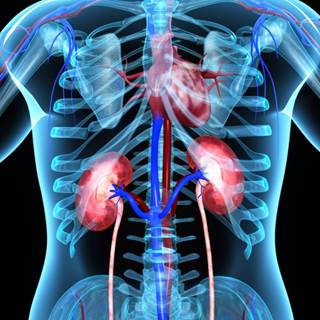Search for dialysis centres here
 Log in to explore the world's most comprehensive database of dialysis centres for free!
Log in to explore the world's most comprehensive database of dialysis centres for free!
| Contrast-Induced Nephropathy in Kidney Tx Patients Characterized - Renal and Urology News |
 |
 |
May 05, 2015
 Study reveals a 13% incidence of CIN in allograft recipients undergoing computed tomography or cardiac catheterization with contrast media. PHILADELPHIA—Contrast-induced nephropathy (CIN) is relatively common in kidney transplant recipients undergoing computed tomography (CT) or cardiac catheterization with contrast media, researchers concluded in a poster presentation at the 2015 American Transplant Congress. Bassam G. Abu Jawdeh, MD, and colleagues at the University of Cincinnati in Ohio studied 76 contrast exposures (45 CT scans and 31 catheterizations) in 50 kidney transplant recipients (50% male) with a mean age of 53.3 years and mean serum creatinine level of 1.46 mg/dL. The investigators identified CIN—defined as a rise in serum creatinine by more than 0.3 mg/dL or 25% from baseline within 4 days of contrast exposure—in 10 of 76 procedures (13.2%). Results showed that 6 (13.3%) of the 45 CT scans and 4 (12.9%) of the 31 catheterizations resulted in CIN. Dr. Abu Jawdeh's group also examined risk factors for CIN. In a multivariate model, exposure to N-acetylcysteine (NAC) and a lower hemoglobin level were significantly associated with an increased risk of CIN, but calcineurin inhibitor use was not. Dr. Abu Jawdeh said NAC may have been administered to patients at high risk for CIN, a bias that could explain the increased risk of CIN associated with NAC use. At the last follow-up, CIN did not affect allograft function and survival, according to the researchers. “Contrast-induced nephropathy is associated with a significant increase in mortality and morbidity,” Dr. Abu Jawdeh told Renal & Urology News. “Although we often extrapolate what we know about native kidneys to allografts, that might not reflect best practice. Allografts are solitary kidneys that experience significant hemodynamic alterations and kidney recipients are on lifelong immunosuppressive medications. Both of these factors might affect susceptibility to contrast-induced injury. Since data on contrast nephropathy in kidney allografts is limited we decided to proceed with this retrospective study.” CIN is potentially modifiable if risk factors are identified and preventive measures are taken, said Dr. Abu Jawdeh, an assistant professor in the division of nephrology and hypertension. The 13.3% incidence of CIN identified in the new study is consistent with previous studies looking at native kidneys, he said. Dr. Abu Jawdeh acknowledged that their study was limited by the small sample size and retrospective design, so the findings should be interpreted cautiously.
|
 Professional dialysis recruitment
Professional dialysis recruitment
